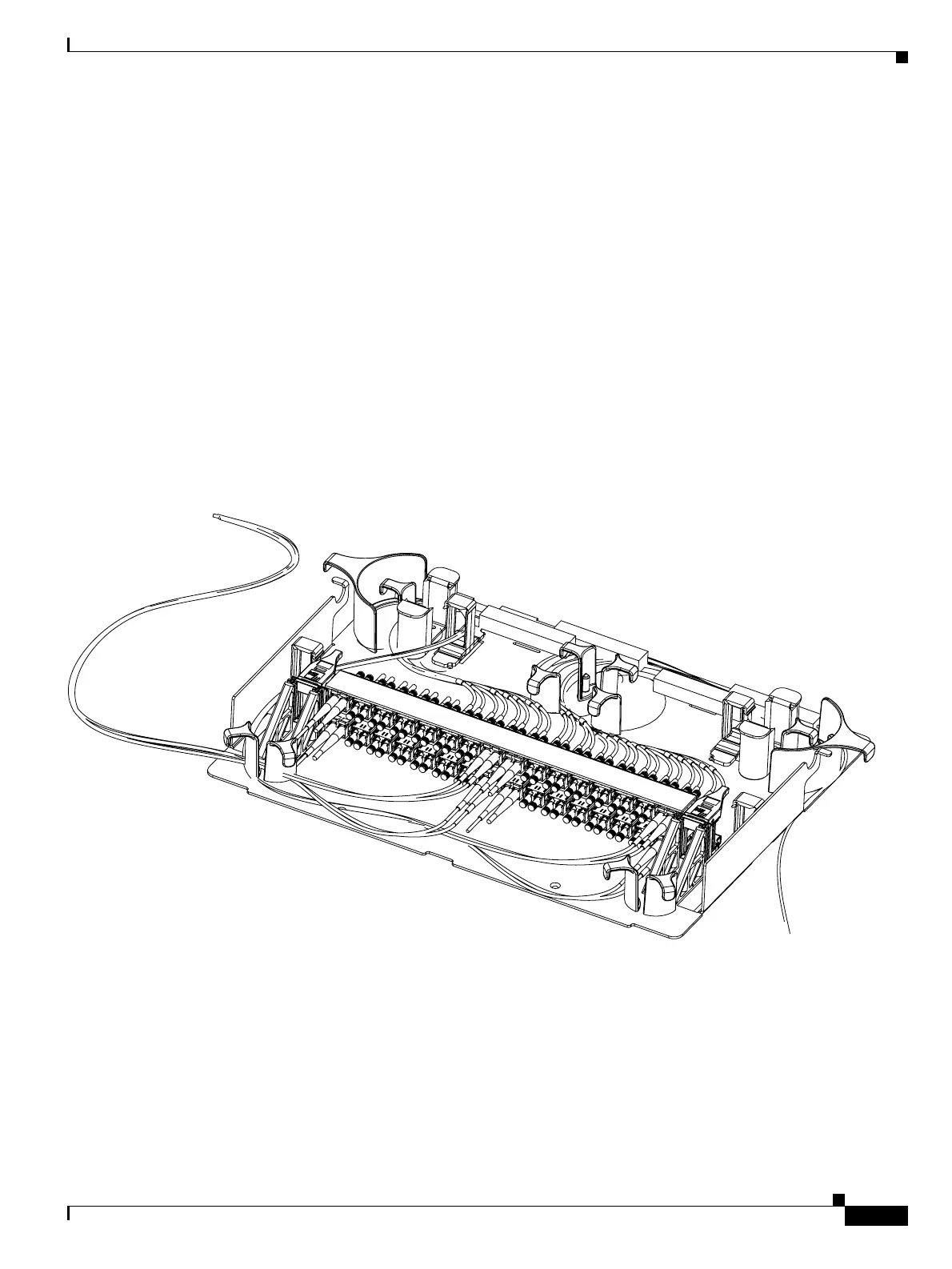15-39
Cisco ONS 15454 DWDM Installation and Operations Guide, R6.0
September 2005
Chapter 15 Shelf Hardware Reference
15.11.2 Fiber Management Using the Patch-Panel Tray
Determine your fiber size according to the number of cards/ports installed in each side of the shelf. For
example, if your port combination requires 36 fibers, 3-mm (0.11-inch) fiber is adequate. If your port
combination requires 68 fibers, you must use 2-mm (0.7-inch) or smaller fibers.
15.11.2 Fiber Management Using the Patch-Panel Tray
The optional patch-panel tray manages the connections between multiplexer/demultiplexer and TXP
cards by splitting patch cords into single connections. The patch-panel tray consists of a metal shelf,
pull-out drawer, and drop-in patch-panel module. It can host up to eight ribbon cables (with eight fibers
each) entering the drawer or 64 cables (with a maximum outer diameter of 2 mm [0.079 inches]).
Because the patch-panel tray can host 64 connections, hub and ROADM nodes will typically require two
patch-panel modules each, and other DWDM nodes typically require one. The module fits 19- and
23-inch (482.6-mm and 584.2-mm) ANSI racks and 600 mm (23.6 inch) x 300 mm (11.8 inch) ETSI
racks, using reversible brackets.
Figure 15-37 shows a partially fibered patch-panel tray.
Figure 15-37 Patch-Panel Tray
15.11.3 Fiber Management Using the Fiber-Storage Tray
Cisco recommends installing at lease one fiber-storage tray in multinode racks to facilitate fiber-optic
cable management for DWDM applications. This tray is usually used to store slack cable from cables
installed between cards within a single node. Refer to Figure 15-15 on page 15-18 for typical mounting
locations.
124007

